Abstract
Workers and citizens are turning increasingly to the health care system for information about occupational and environmental reproductive hazards, yet most primary care providers and specialists know little about the effects of occupational/environmental toxicants on the reproductive system or how to evaluate and manage patients at potential risk. Although it is unrealistic to expect all clinicians to become experts in this area, practitioners should know how to take a basic screening history, identify patients at potential risk, and make appropriate referrals. At present, occupational and environmental health issues are not well integrated into health professional education in the United States, and clinical information and referral resources pertaining to reproductive hazards are inadequate. In addressing these problems, the conference "Working Group on Health Provider Education and Resources" made several recommendations that are detailed in this report. Short-term goals include enhancement of existing expertise and resources at a regional level and better integration of information on occupational/environmental reproductive hazards into curricula, meetings, and publications of medical and nursing organizations. Longer term goals include development of a comprehensive, single-access information and referral system for clinicians and integration of occupational and environmental medicine into formal health professional education curricula at all levels.
Full text
PDF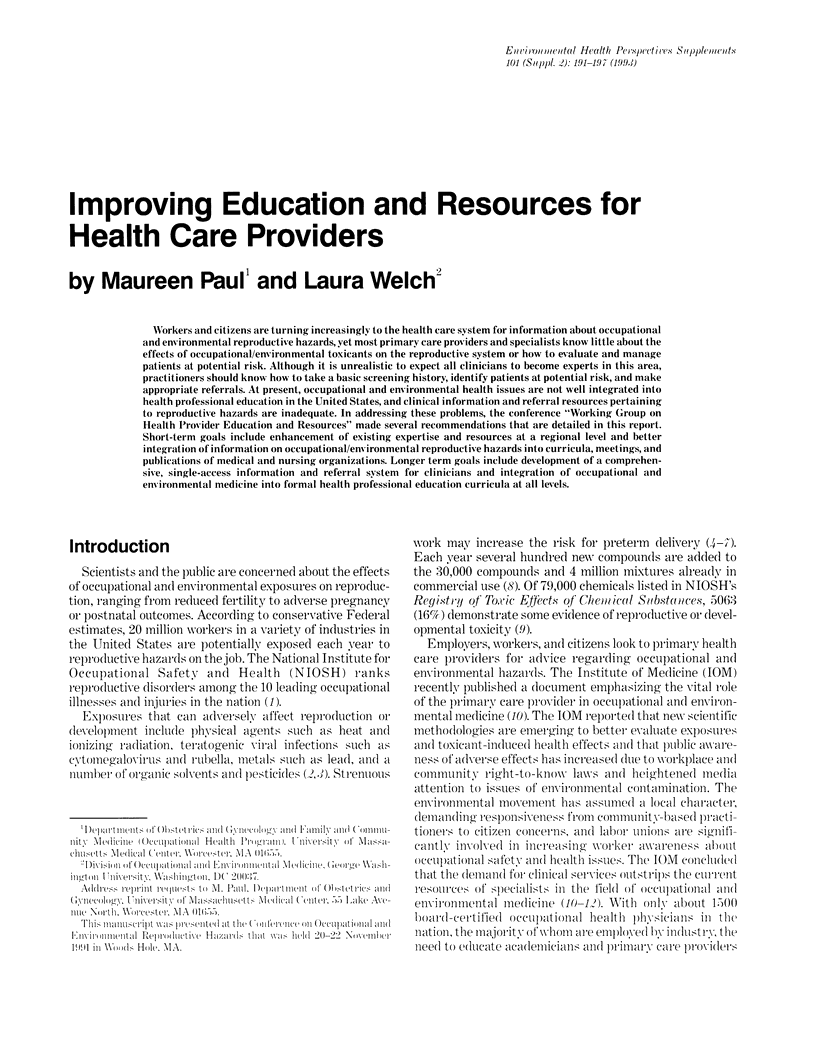
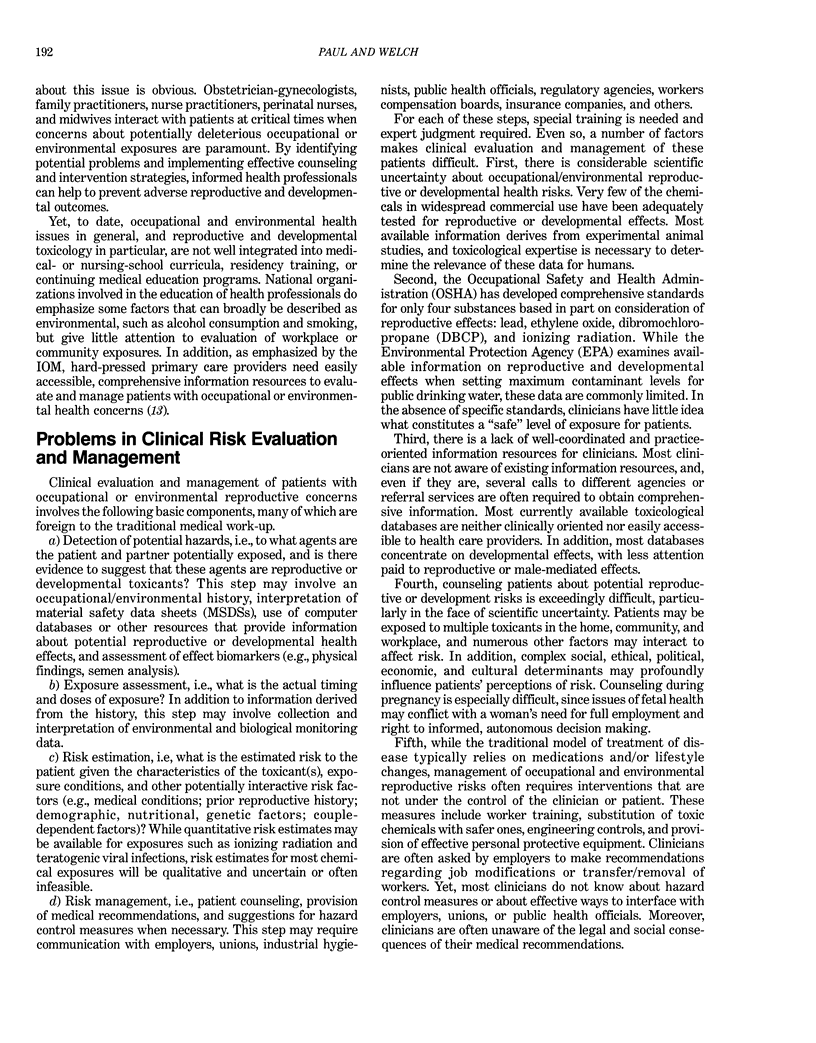
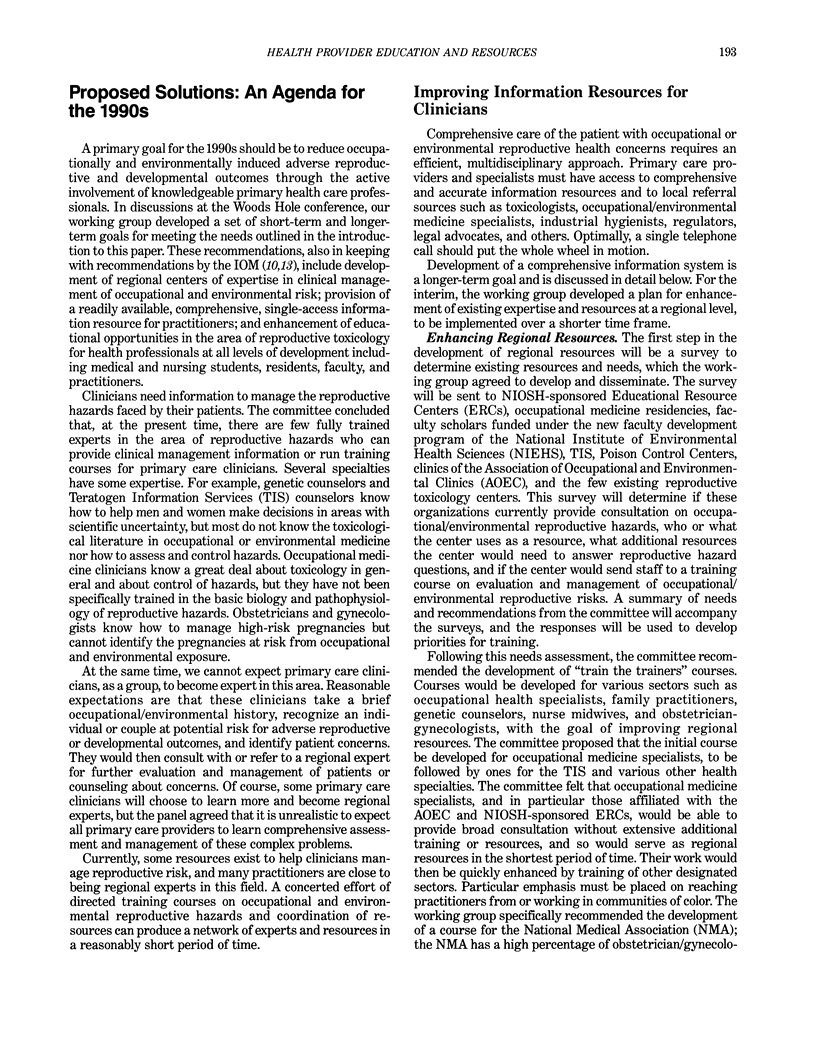
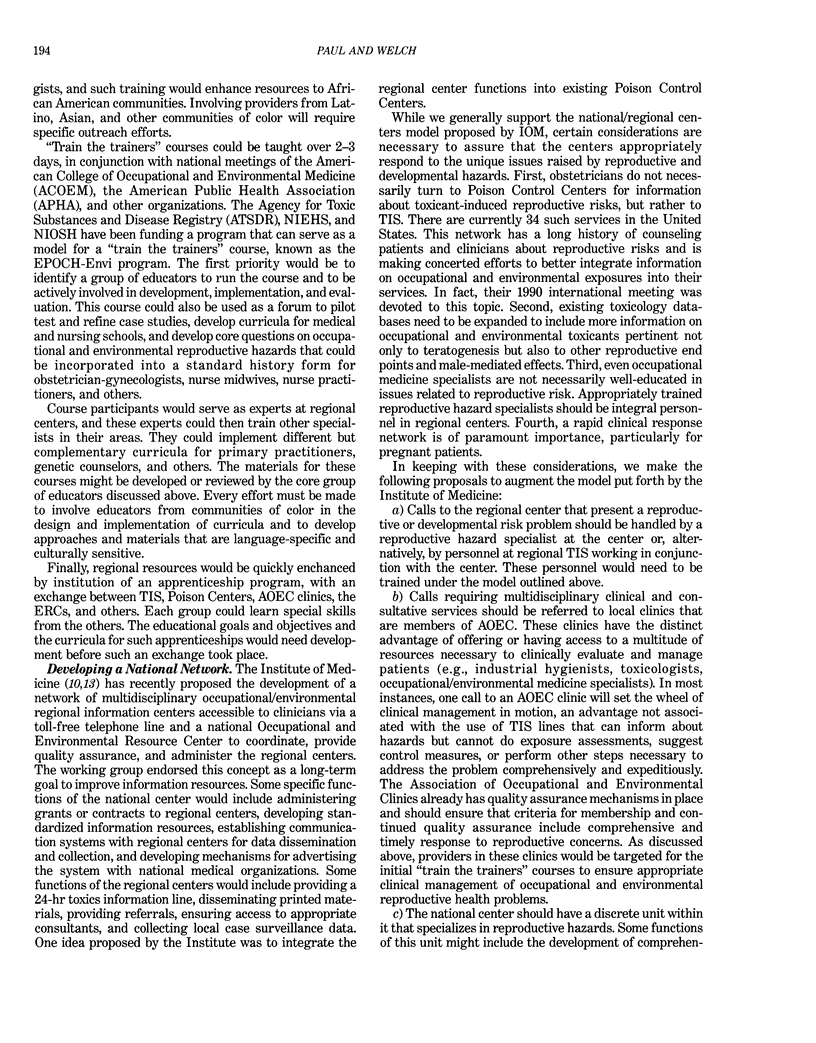
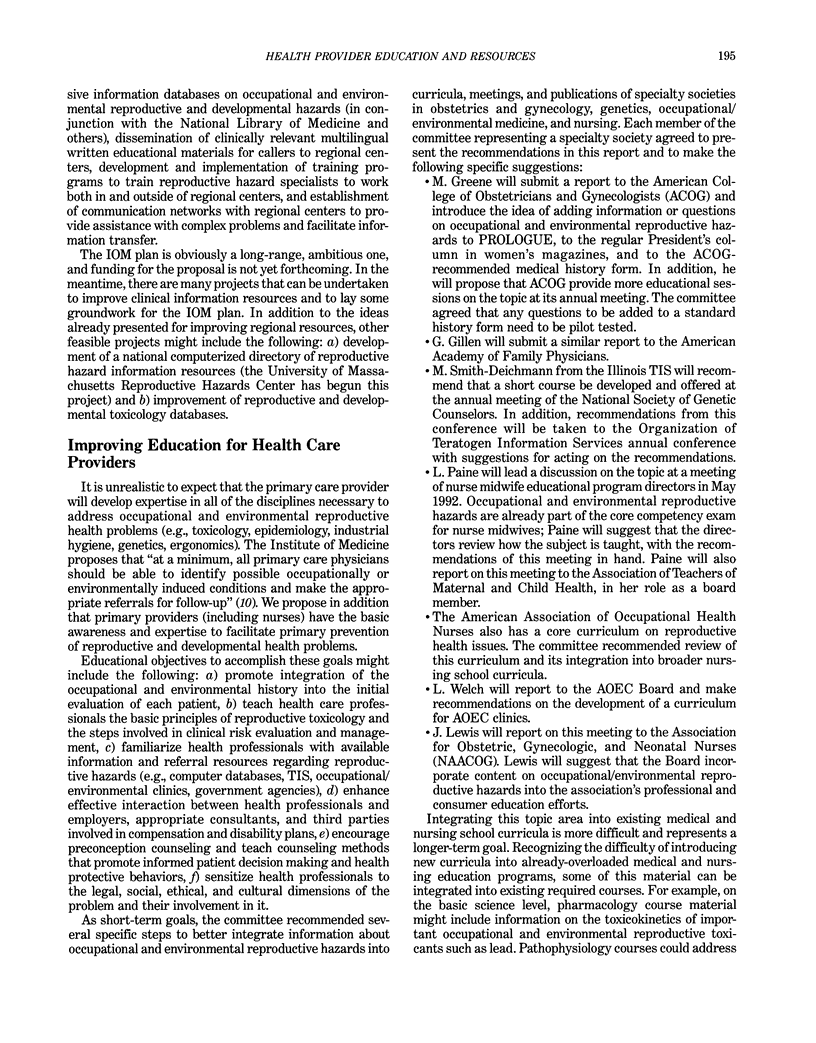
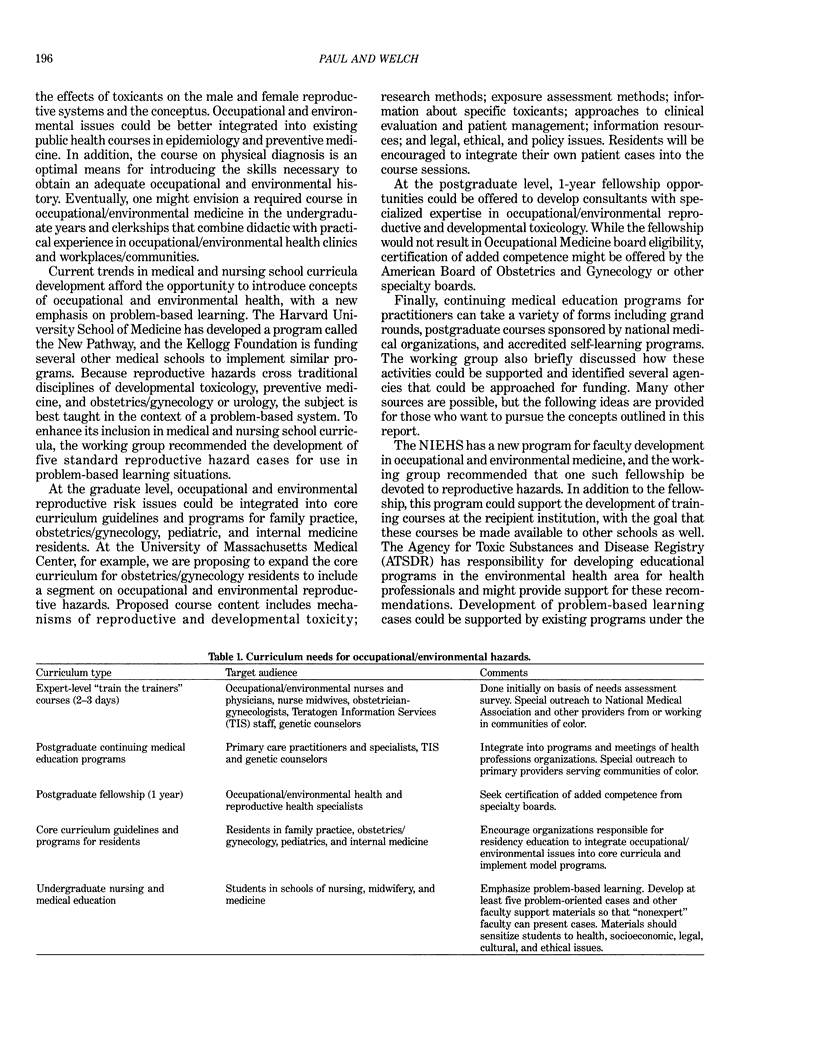
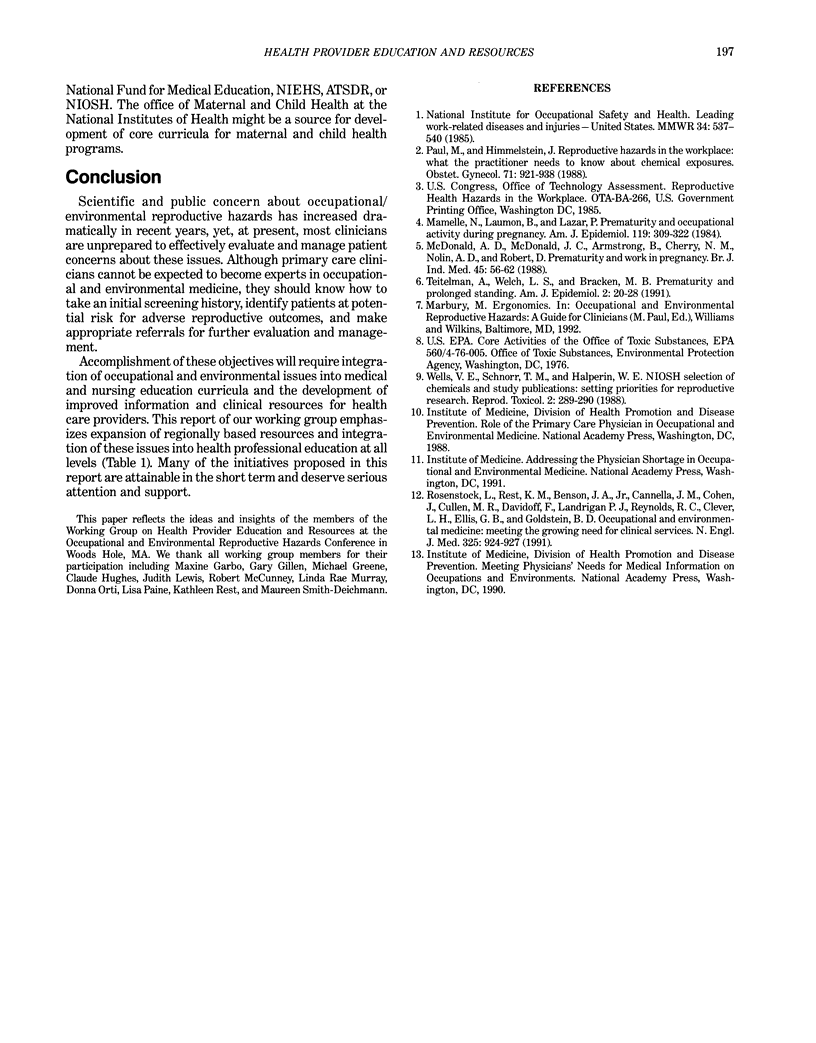
Selected References
These references are in PubMed. This may not be the complete list of references from this article.
- Mamelle N., Laumon B., Lazar P. Prematurity and occupational activity during pregnancy. Am J Epidemiol. 1984 Mar;119(3):309–322. doi: 10.1093/oxfordjournals.aje.a113750. [DOI] [PubMed] [Google Scholar]
- McDonald A. D., McDonald J. C., Armstrong B., Cherry N. M., Nolin A. D., Robert D. Prematurity and work in pregnancy. Br J Ind Med. 1988 Jan;45(1):56–62. doi: 10.1136/oem.45.1.56. [DOI] [PMC free article] [PubMed] [Google Scholar]
- Paul M., Himmelstein J. Reproductive hazards in the workplace: what the practitioner needs to know about chemical exposures. Obstet Gynecol. 1988 Jun;71(6 Pt 1):921–938. [PubMed] [Google Scholar]
- Rosenstock L., Rest K. M., Benson J. A., Jr, Cannella J. M., Cohen J., Cullen M. R., Davidoff F., Landrigan P. J., Reynolds R. C., Clever L. H. Occupational and environmental medicine. Meeting the growing need for clinical services. N Engl J Med. 1991 Sep 26;325(13):924–927. doi: 10.1056/NEJM199109263251305. [DOI] [PubMed] [Google Scholar]
- Wells V. E., Schnorr T. M., Halperin W. E. NIOSH selection of chemicals and study publications: setting priorities for reproductive research. Reprod Toxicol. 1988;2(3-4):289–290. doi: 10.1016/0890-6238(88)90033-0. [DOI] [PubMed] [Google Scholar]


